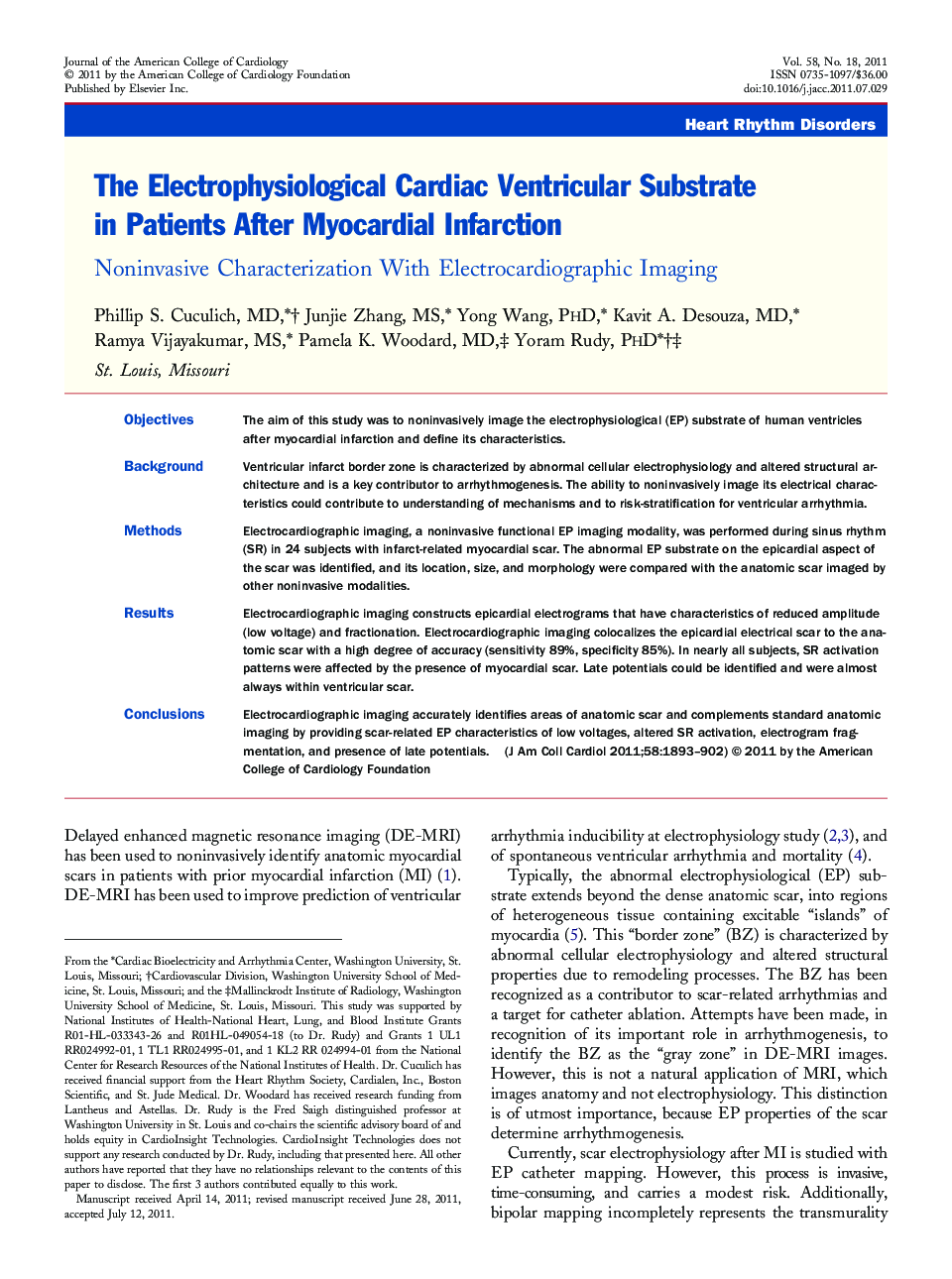| Article ID | Journal | Published Year | Pages | File Type |
|---|---|---|---|---|
| 5983492 | Journal of the American College of Cardiology | 2011 | 10 Pages |
ObjectivesThe aim of this study was to noninvasively image the electrophysiological (EP) substrate of human ventricles after myocardial infarction and define its characteristics.BackgroundVentricular infarct border zone is characterized by abnormal cellular electrophysiology and altered structural architecture and is a key contributor to arrhythmogenesis. The ability to noninvasively image its electrical characteristics could contribute to understanding of mechanisms and to risk-stratification for ventricular arrhythmia.MethodsElectrocardiographic imaging, a noninvasive functional EP imaging modality, was performed during sinus rhythm (SR) in 24 subjects with infarct-related myocardial scar. The abnormal EP substrate on the epicardial aspect of the scar was identified, and its location, size, and morphology were compared with the anatomic scar imaged by other noninvasive modalities.ResultsElectrocardiographic imaging constructs epicardial electrograms that have characteristics of reduced amplitude (low voltage) and fractionation. Electrocardiographic imaging colocalizes the epicardial electrical scar to the anatomic scar with a high degree of accuracy (sensitivity 89%, specificity 85%). In nearly all subjects, SR activation patterns were affected by the presence of myocardial scar. Late potentials could be identified and were almost always within ventricular scar.ConclusionsElectrocardiographic imaging accurately identifies areas of anatomic scar and complements standard anatomic imaging by providing scar-related EP characteristics of low voltages, altered SR activation, electrogram fragmentation, and presence of late potentials.
